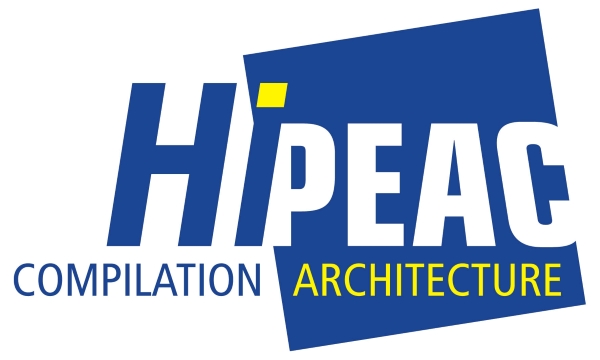Announcements

HiPEAC Drives European Research in Computing Systems
On January 30-31, the High-Performance and Embedded Architecture and Compilation (HiPEAC) network of excellence met for its kick-off meeting in Göteborg, Sweden. The meeting was attended by 170 computing system researchers from all over Europe.
Due to technology limitations, the domain of high-performance processors is experiencing a radical shift towards parallelism through on-chip multi-cores and chip customization, leading to heterogeneous multi-core systems. Furthermore, the commodity market, the supercomputing market and the embedded market are increasingly sharing the same challenges, leading to convergence of the three markets.
The HiPEAC network brings together the best European computing system research groups, and organizes a variety of activities for its members. The network wants to steer European research in computing systems by developing a common research roadmap, and by organizing regular thematic research meetings that cover the whole area of computing systems from hardware design to applications. The network runs its own international conference and summer school with an attendance of over 200 delegates per event.
The network is a continuation of an existing network of excellence with the same name. It is run by 12 partners: RWTH Aachen, BSC Barcelona, Chalmers University of Technology, TU Delft, University of Edinburgh, Foundation for Research and Technology - Hellas (FORTH) Institute of Computer Science, Ghent University, INRIA, ARM, IBM, NXP, and ST. The network is being coordinated by Ghent University, Belgium.
For more information, see : http://www.hipeac.net
Core objectives of HiPEAC
Research coordination: Research coordination in HiPEAC is done in 9 clusters, each dealing with a specific part of the HiPEAC research agenda. Clusters are formed by researchers from industry and academia interested in the topic of the cluster. Clusters continuously update their research agenda and steer European research by deciding on which challenges to tackle and by coordinating the research efforts of the cluster members.
Collaboration and networking: Stimulate joint research between member institutions across the different disciplines: computer architects, design tool builders, compiler builders, system designers, between researchers from academia and industry, between European and non-European institutions. This collaboration between best of breed must lead to more European excellence in the HiPEAC domain.
Valorisation: Stimulate valorisation of research results in the form of highly visible publications and commercialization of research results by existing companies or by newly created companies. The goal is to further increase Europe's worldwide visibility in the HiPEAC domain and to help companies achieve world-leading positions in the computing systems and computing products.
The HiPEAC Instruments
- Stimulating mobility (internships, sabbaticals, research visits, cluster meetings)
- Coordinating and steering research in 9 research clusters:
- Multi-core architecture
- Programming models and operating systems
- Adaptive compilation
- Interconnects
- Reconfigurable computing
- Design methodology and tools
- Binary translation and virtualization
- Simulation platform
- Compilation platform
- Spreading excellence by running the HiPEAC conference, the ACACES summer school, the HiPEAC journal, a newsletter, a website, seminars, technical reports, workshops, and awards.
More information
Giorgos Dimitrakopoulos
Collaborating Researcher
Foundation for Research and Technology - Hellas (FORTH)
Institute of Computer Science
Tel.: +30 2810 391494
Email: dimitrak@ics.forth.gr








